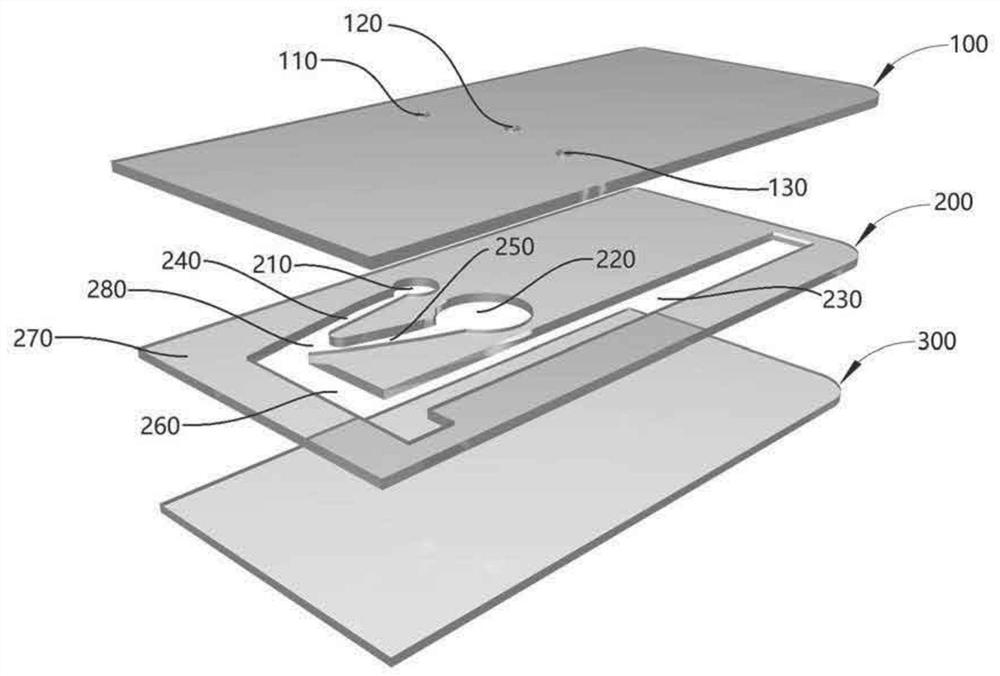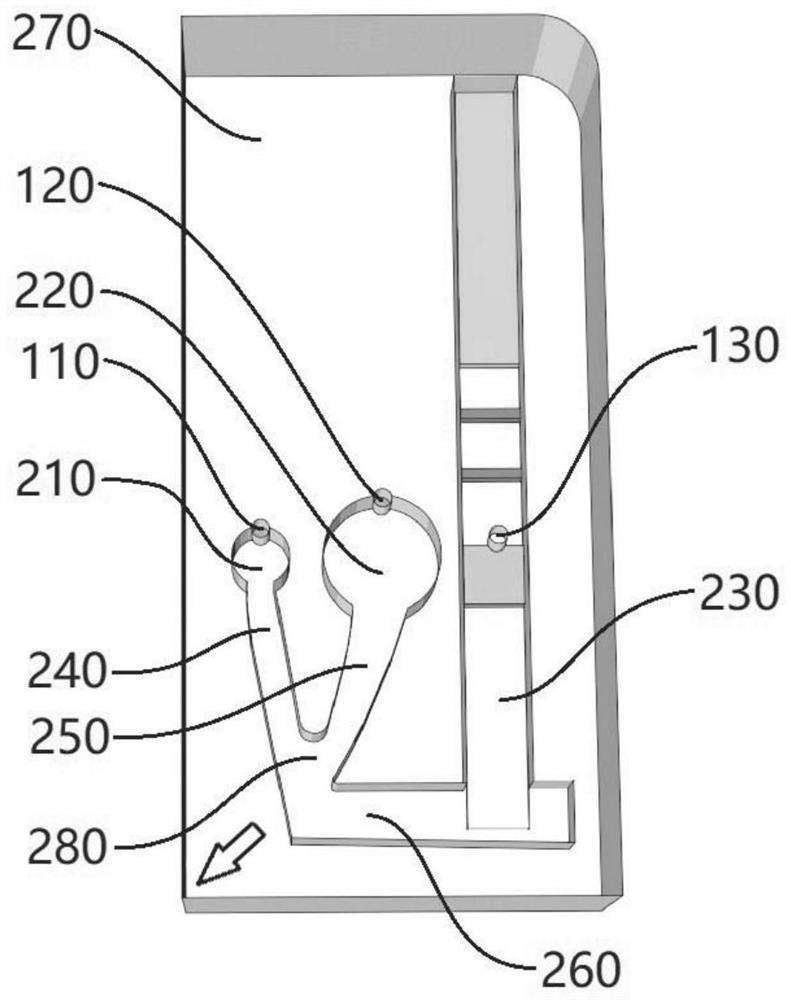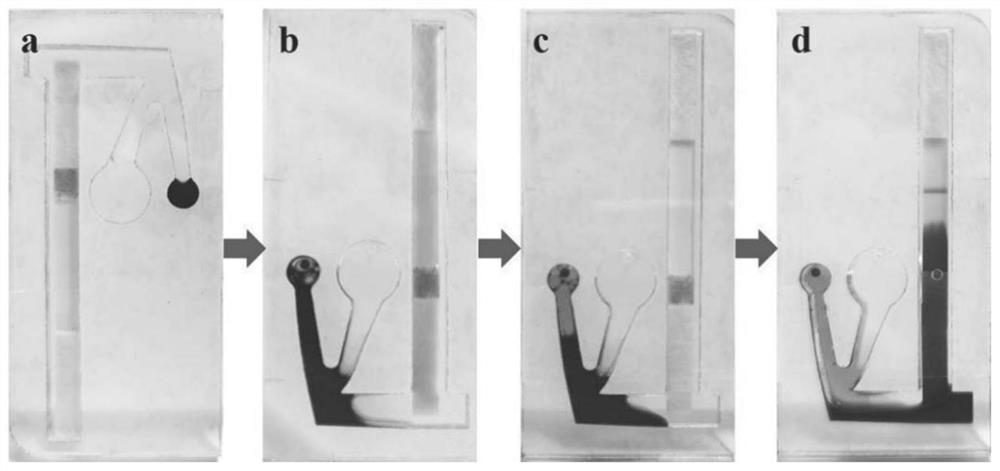Method and device for nucleic acid testing, and application of method and device in COVID-19 detection
A nucleic acid and detection plate technology, which is applied in the fields of biochemical equipment and methods, recombinant DNA technology, and microbial determination/inspection. It can solve the problems of low integration, complicated operation, low sensitivity, etc. Powerful, easy-to-use effects
- Summary
- Abstract
- Description
- Claims
- Application Information
AI Technical Summary
Problems solved by technology
Method used
Image
Examples
Embodiment 1
[0065] Figure 1a It is a schematic structural diagram of an embodiment of the nucleic acid detection device of the present invention, Figure 1b It is a schematic diagram of an embodiment of nucleic acid detection using the nucleic acid detection device of the present invention. Figure 1 and figure 2 As shown, the nucleic acid detection device of the present invention includes a cover plate 100 , a detection plate 200 and a bottom plate 300 . The bottom plate 300 is placed under the detection board 200 to support the detection board 200, and the material is such as: but not limited to polymethyl methacrylate (PMMA), polycarbonate (PC), cycloolefin copolymer (COC) , glass and polyethylene etc. The cover plate 100 is made of materials such as but not limited to polymethyl methacrylate (PMMA), polycarbonate (PC), cycloolefin copolymer (COC), glass and polyethylene, etc., which are covered on the detection plate 200 , including a first hole 110 , a second hole 120 and a third...
Embodiment 2
[0074] (1) Extract nucleic acid:
[0075] Extract nucleic acid according to traditional commercial kits;
[0076] (2) Sample testing:
[0077] Add 200 μL of test strip buffer system to the second chamber 220 of the microfluidic chip.
[0078] Add 13.5L molecular crowding reagent (concentration 20wt% molecular weight 35,000 polyethylene glycol), 30μL sample RNA, and 4μL primer pairs to the PCR tube in sequence, centrifuge at low speed for 10 seconds, and transfer the liquid to the reaction dry powder In the detection tube of the enzyme preparation, cover the tube cap, mix well by inverting up and down 7-8 times, and centrifuge at low speed for 10 seconds.
[0079] Add the solution in the detection tube to the first chamber 210 to implement RT-RAA amplification (pay attention to avoid air bubbles as much as possible), and add 2.5 μL of amplification starter (280nM magnesium acetate), and start timing (simultaneously tape the first hole 210 and The second hole 220 is sealed), ...
Embodiment 3
[0082] This example verifies the feasibility of a highly integrated microfluidic chip for the amplification and detection of COVID-19 virus established in Example 2. Including the following steps:
[0083] Nucleic acid was extracted by pyrolysis to obtain 0, 10 per microliter 0 、10 1 、10 2 、10 3 、10 4 、10 5 Copy number of sample RNA. The method for RT-RAA amplification and the detection of the amplified product is the same as step (2) of Example 2. The result is as image 3As shown, for the samples containing the N gene, two clear bands appeared on the test strips, indicating that the method in Example 1 of the present invention is feasible.
PUM
 Login to View More
Login to View More Abstract
Description
Claims
Application Information
 Login to View More
Login to View More - R&D
- Intellectual Property
- Life Sciences
- Materials
- Tech Scout
- Unparalleled Data Quality
- Higher Quality Content
- 60% Fewer Hallucinations
Browse by: Latest US Patents, China's latest patents, Technical Efficacy Thesaurus, Application Domain, Technology Topic, Popular Technical Reports.
© 2025 PatSnap. All rights reserved.Legal|Privacy policy|Modern Slavery Act Transparency Statement|Sitemap|About US| Contact US: help@patsnap.com



